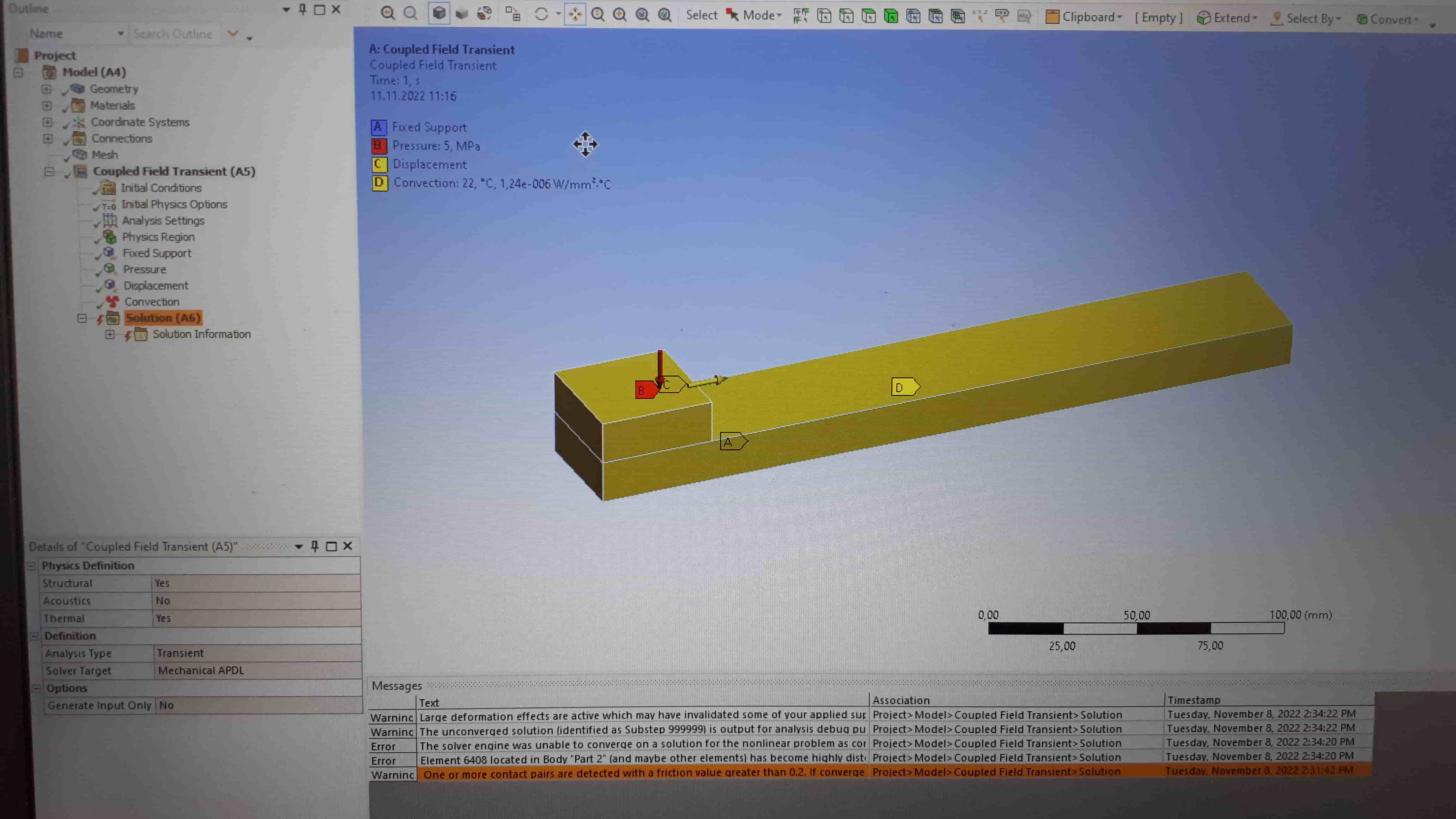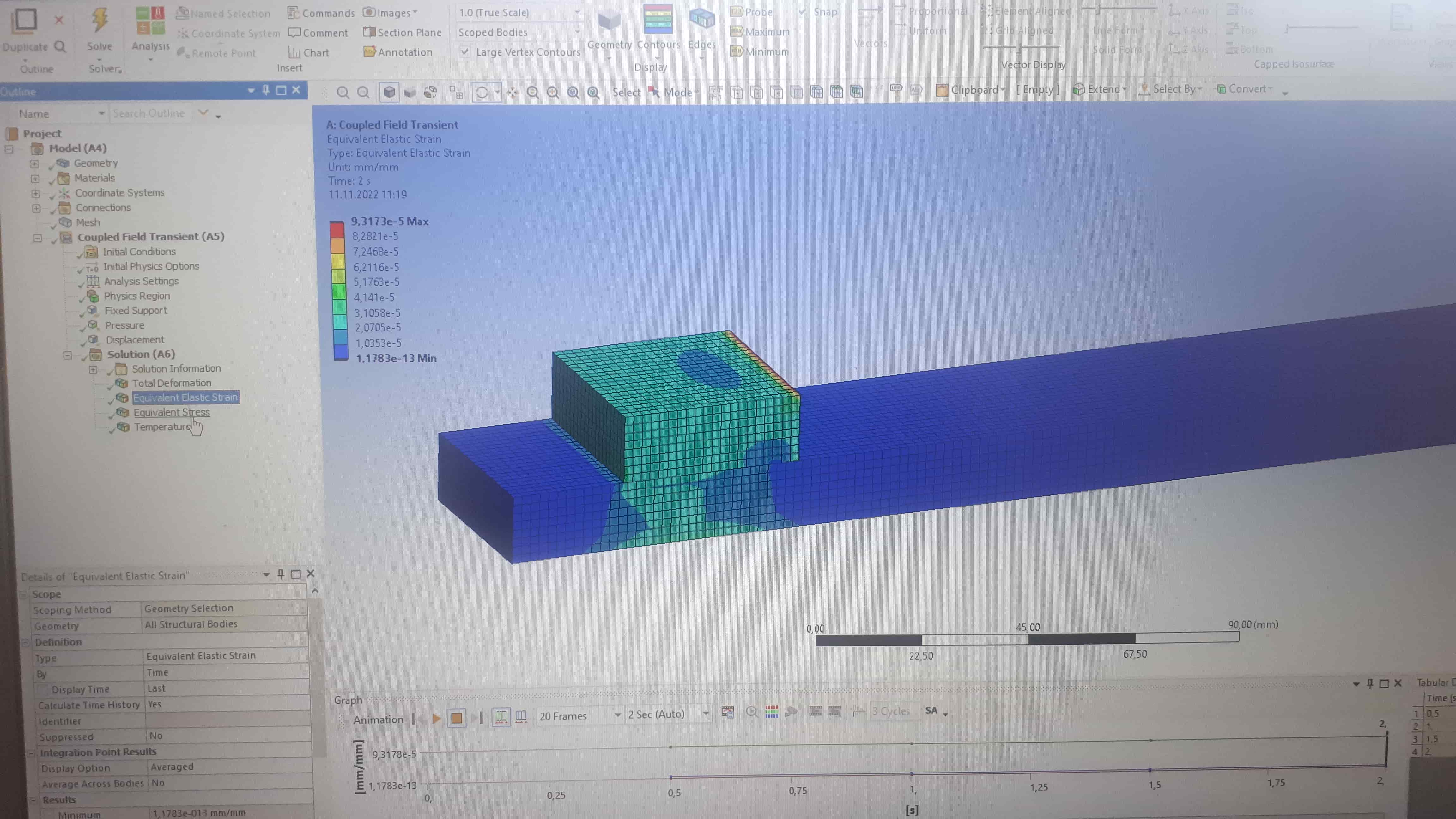TAGGED: frictional-contact
-
-
November 11, 2022 at 8:31 am
Metehan Emirzeoğlu
SubscriberDear Ansys Users;
Since my research location is related to the frictional behavior of 3D solid models, I wanted to start my tests with simple models as seen in the photo. I think I can perform my tests in Couple Field Transient analysis since I can control the mechanical and thermodynamic properties of the models in the same way. When the connection between the two parts is no separation, the problem is being solved; When the connection in question is defined as friction, the problem gives the error in the photo. I just entered the coefficient of friction to define the friction link and left everything else to program control. Since the connection type is frictional, I assigned a convection coefficient to the material against the heat that will occur.
When I watched other videos on the internet, I noticed that friction problems were solved in Couple Field Transient with 2D analysis or in Transient Structural using APDL. However, these solutions will not work on advanced models. I would be glad if you could help me to solve this problem.
Unsuccessful Frictional Analysis
Successful No-Sepreration Analysis
-
November 11, 2022 at 9:14 am
Erik Kostson
Ansys EmployeeHi
There is an example similar to what you are trying to model above, in our help manual and under the workbench techn. show cases:
Chapter 28: Friction Stir Welding (FSW) Simulation
Chapter 28: Friction Stir Welding (FSW) Simulation (ansys.com)
All the best
Erik
-
- The topic ‘Friction Heat in Coupled Field Transient’ is closed to new replies.


- The legend values are not changing.
- LPBF Simulation of dissimilar materials in ANSYS mechanical (Thermal Transient)
- Convergence error in modal analysis
- APDL, memory, solid
- How to model a bimodular material in Mechanical
- Meaning of the error
- Simulate a fan on the end of shaft
- Nonlinear load cases combinations
- Real Life Example of a non-symmetric eigenvalue problem
- How can the results of Pressures and Motions for all elements be obtained?

-
3882
-
1414
-
1241
-
1118
-
1015

© 2025 Copyright ANSYS, Inc. All rights reserved.









